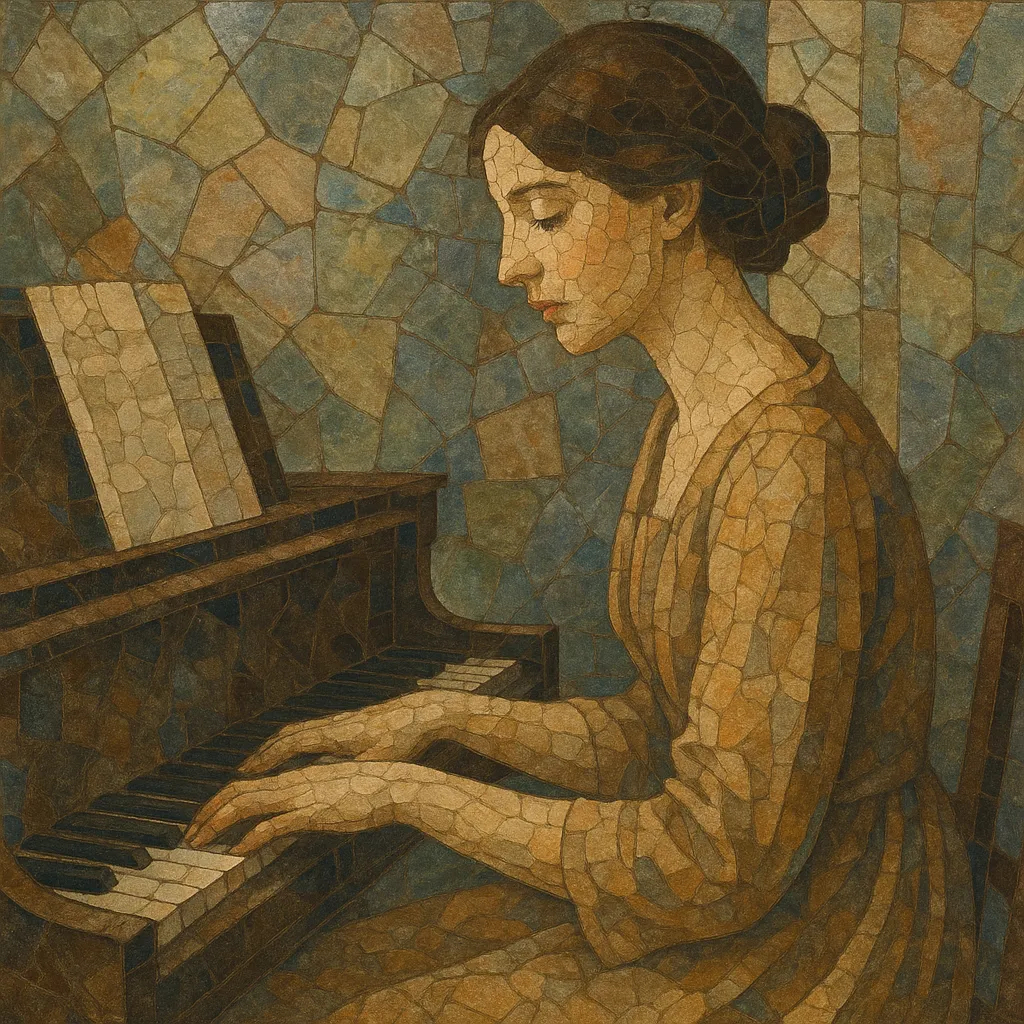Mélodie is the French tradition of art song, typically for solo voice and piano, that blossomed in the mid-to-late 19th century. It places exceptional emphasis on the natural inflection and clarity of the French language, marrying refined poetry to nuanced melodic lines and sensitive accompaniments.
Compared to the German Lied, mélodie is often more restrained and speech-like in phrasing, prioritizing text intelligibility, elegance of line, and subtle harmonic shading. Composers frequently set poems by major French writers—particularly from the Parnassian and Symbolist movements—resulting in music that is intimate, evocative, and rich in coloristic detail.
The piano part in mélodie is not merely supportive; it participates actively in the narrative and atmosphere, with delicate figurations, harmonic ambiguity, and timbral nuance that paint the poem’s imagery. While most mélodies are for voice and piano, notable cycles were later orchestrated, expanding the genre’s palette without sacrificing its core intimacy.
Mélodie emerged in France during the 1840s as a distinctly French counterpart to the German Lied. Hector Berlioz’s Les Nuits d’été (1841–42) is often cited as the first great French song cycle, and Charles Gounod helped consolidate the genre through elegant settings that aligned with salon culture and Romantic aesthetics. The genre’s literary backbone drew on leading French poets, creating a refined union of verse and music.
Gabriel Fauré shaped the mature idiom of mélodie with supple vocal lines and harmonies that balance clarity with subtle chromatic and modal color. Henri Duparc, though leaving a small output, distilled an intense, Wagner-influenced harmonic language into perfectly crafted songs. Ernest Chausson and Jules Massenet contributed richly expressive works, while Reynaldo Hahn epitomized a lyrical, urbane sensibility. This period elevated mélodie to a peak of poetic and musical sophistication.
Claude Debussy and Maurice Ravel infused mélodie with impressionist color and refined prosody. Debussy’s attention to speech rhythm and timbre, along with whole-tone, modal, and extended tonal sonorities, broadened the expressive palette. Ravel’s craftsmanship brought crystalline textures, precise diction settings, and subtle rhythmic inflections, further modernizing the genre while preserving its intimacy.
Francis Poulenc revitalized mélodie between the wars with witty, tender, and spiritually resonant cycles, extending the lineage into modern classicism. As concert culture evolved, mélodie remained central to French recital repertoire, influencing modern and contemporary vocal writing. Orchestrated mélodies entered the symphonic repertory, while the core voice–piano format continued to thrive in recital practice, pedagogy, and recordings.
Select French poetry that suggests musical atmosphere—works by Parnassian or Symbolist poets (e.g., Verlaine, Baudelaire) are exemplary. Prioritize texts with clear imagery and prosody. Aim for natural French diction: align musical stress with syllabic accents and avoid obscuring vowels with heavy melismas.
Craft a lyrical, speech-inflected melody that follows the contours of spoken French. Use primarily syllabic settings with occasional expressive elongation. Maintain elegance and restraint; climaxes should feel earned and text-driven rather than operatically grand by default.
Employ late-Romantic and impressionist harmonic palettes: modal mixture, extended chords, and coloristic shifts. Use gently shifting tonal centers or modal inflections to mirror the poem’s emotional turns. Avoid excessive cadential emphasis; favor harmonic suggestion and timbral resonance.
Treat the piano as an equal partner. Use figuration, register, and pedaling to evoke imagery (e.g., flowing arpeggios for water, hushed chords for nocturnes). Allow the accompaniment to preface or echo textual ideas, creating dialogue between voice and piano.
Adopt strophic, modified strophic, or through-composed forms based on the poem’s structure. Keep movements concise and focused, with transitions that serve narrative clarity. Silence and breath are expressive tools—shape phrases with rubato and sensitive pacing.
Ensure impeccable diction and nuanced dynamics. Balance intimacy and projection; prioritize clarity of text over sheer volume. Pianists should use refined pedaling and tonal shading; singers should favor legato, chiaroscuro tone, and expressive but tasteful portamento.
When orchestrating, retain the genre’s intimacy: chamber-sized forces, transparent textures, and coloristic doublings that preserve textual clarity.


